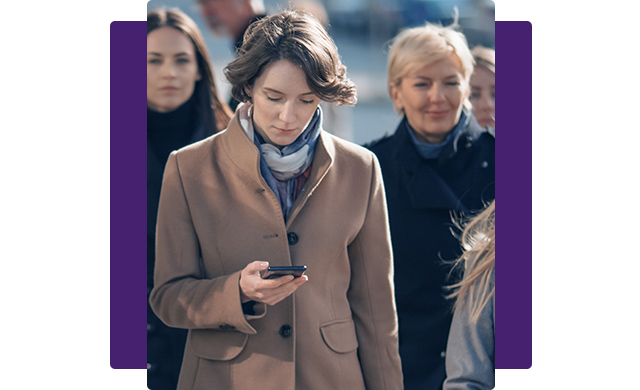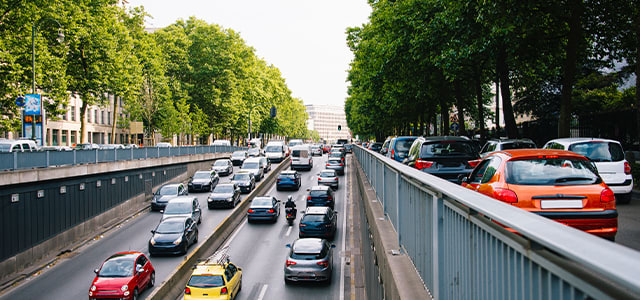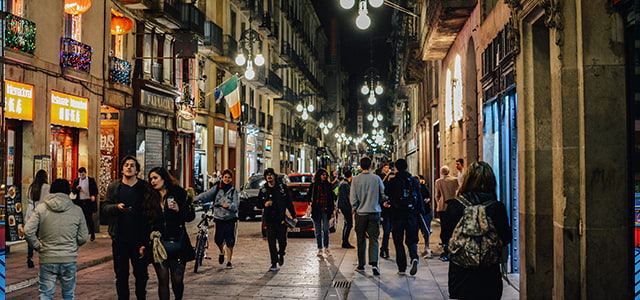Geolocation based data analytics
- Use location and other data to your advantage
- Determine which insight you want
Proximus Analytics
Proximus Analytics will give you a better understanding of what is going on inside a certain zone at specific times.
How many people are present in the zone? Where do they come from? Who are they? How do they move around? How long do they stay? How often do they return? What is the financial impact?
Proximus Analytics is a tool that allows you to create and order reports very easily.

Use location data and other data sources
Measuring is knowing. By better understanding your customer or visitor, you can adapt your strategy to better meet their needs or even identify their needs and behaviour.
This information is especially useful for:
- The public sector: cities, towns and authorities
- Large-scale distribution
- Retail
- Mobility
- Tourism
- Events
Big Data Solutions
We offer both custom solutions and specific reports that are easy to order by subscribing to Proximus Analytics.
Visitor and Event Analytics
Measures the number of visitors at specific locations and events.
Journey Analytics
Measures the number of movements between point A and point B.
Mobility Analytics
Analyzes the traffic flow thanks to connected vehicles, route sensors and parking sensors.
Real Time Crowd Management
Provides real-time information about the number of people in a specific zone.
Socio-Demographic Analytics
Provides information such as family composition, age, education, income level and social class.
Spending Analytics
Provides information about the amount of spending and the business sectors which take benefit from it.
Custom Analytics
Gain custom insights.
How does it work?
Source
When a user’s mobile connects to mobile antennas, it provides location data. This data can be reuse for insights and statistics. The user could be local subscribers or international subscribers travelling in Belgium.
Privacy
Proximus fully respects the privacy of its customers. All data in the reports are anonymized and aggregated. We only draw up reports if there are at least 30 people active in a region.
Custom build solution
Location based anonymised data are processed and can be combined with other data sources coming from public source (eg StatBel) or from data of partners or even with data from your data base.
Get to know your customer better thanks to data analysis
Use cases by sector
As a retailer it is essential to understand both existing and potential customers in order to make better decisions and grow in a competitive market.
The collected data about the movement and behavior of people in and around your store or existing promotional areas will help you make decisions about future business activities, whether that be an optimized shopping experience for your customers, a new OOH campaign or a new store location.

For events it is interesting to know exactly how many visitors were present, where they came from and how long they stayed.
When an event organizer has all this information at his disposal, he can offer visitors a better service, optimize different zones and act more efficiently in emergency situations.

Today, tourism organizations do not have a lot information about visitor origin and profile. It’s equally hard to know when and how many people visit a tourist attraction, a specific city area or any other area of interest.
Current research methods are cumbersome and cover only a small sample, while available information, such as overnight stays at hotels, or number of entries at different attractions, is limited and may only be available long after the facts.

Local, regional or national governments need to support the interests of a wide variety of stakeholders to make cities or regions more successful. You want to get insight in the number of visitors to public events, tourist attractions or shopping malls so that parking availability, opening hours and retail offerings can be optimized.
By understanding the movement of people, you are able to solve mobility issues and ensure that everyone feels safe during public events or in public areas.

For both local, regional or national governments and mobility organizations information about journeys and movements of people it is essential to improve the traffic flow of citizens and visitors from, to and in a city or area.
A commercial company concerned with transportation and logistics wants to plan its itineraries as much as possible around major congestions points and optimize delivery routes. With location and other data insights you may learn from the past and plan better for the future. With our real-time data feeds you can start managing the situation dynamically.

Security officers are faced with multiple challenges in today’s dynamic world. Crowds are often expected and security risks must be evaluated and addressed in advance. With insights in people movements at past happenings you can better anticipate security measures at upcoming events.
But insight is not enough. Crowds and security challenges may arise quickly or unexpectedly with the help of social or other media.
Knokke
To measure is to know
During the Light Festival Proximus helped smart city Knokke to objectify its policy and improve its services with the help of smart technology and data analytics. The full story can be found in this video.
In smart cities, objective data is essential for policy development and assessment afterwards.
Anthony Wittesaele, Alderman of tourism, Knokke-Heist
